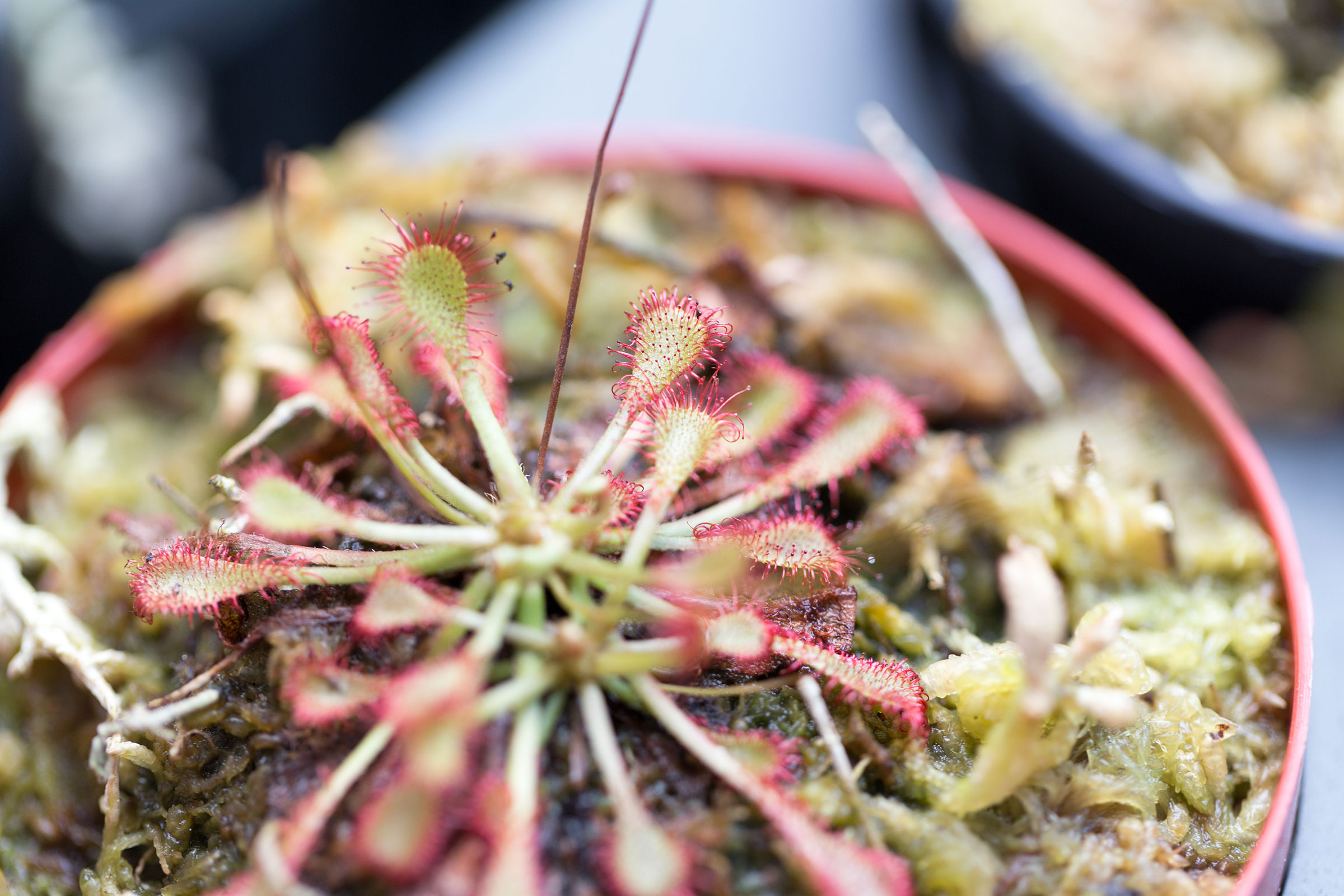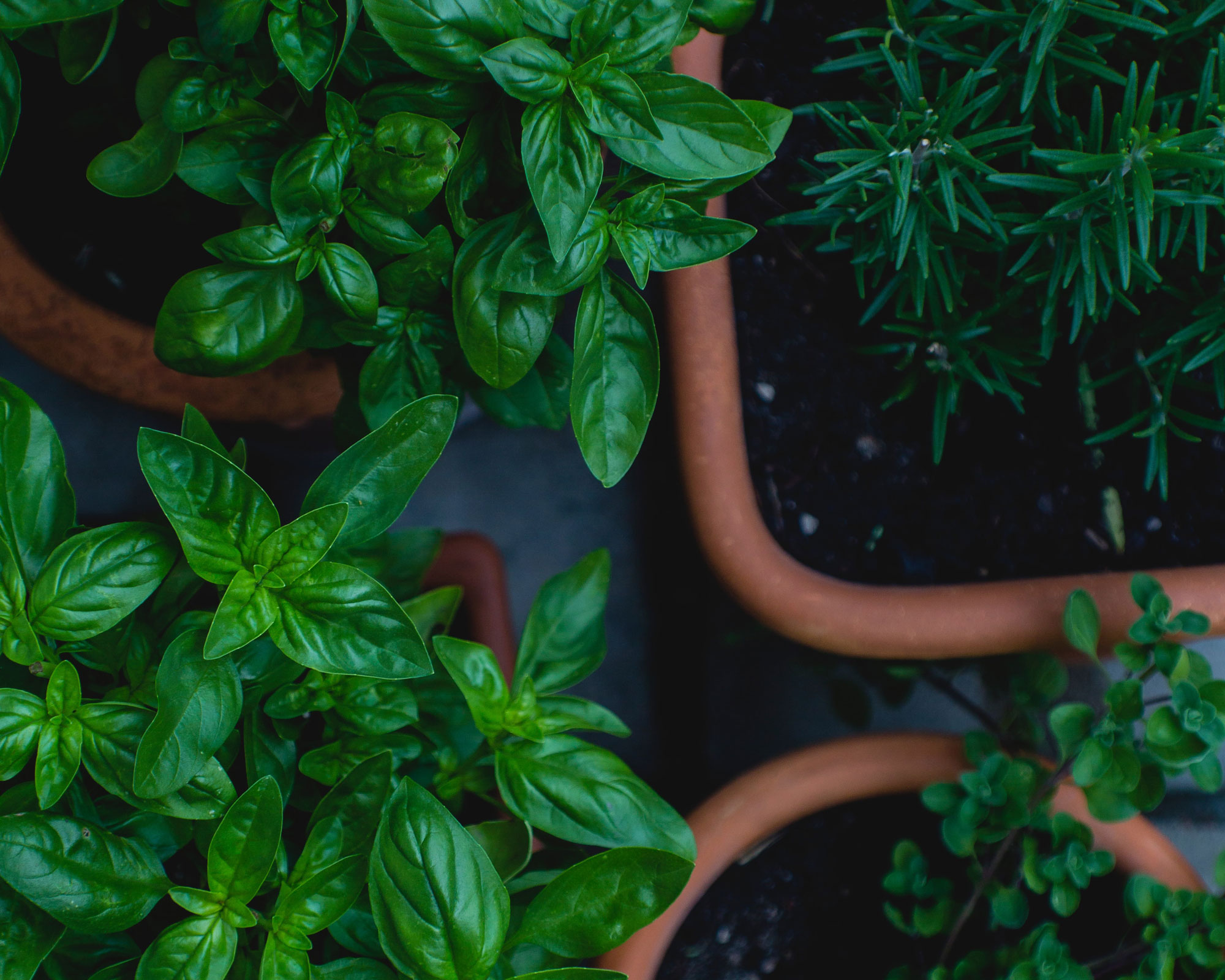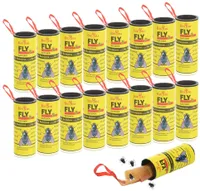How to get rid of gnats – 10 steps to remove and repel them for good
Find out how to get rid of gnats in house plants and other areas of your home. Whether they're plaguing your fruit bowl or congregating in a bathroom, you can kill and deter fungus gnats using vinegar, candles and more clever methods.

Anna K. Cottrell

Need to know how to get rid of gnats once and for all? You've come to the right place. Because when fungus gnats are getting all up in your best indoor plants, flying around where you eat or looking at you from a wall... Annoying is an understatement.
These tiny flying insects can actually bite, too, which is even more – literally and figuratively – irritating. The worst bit is that gnats always descend upon your home and/or garden in large numbers, adding the insult of extra annoyance to the injury of being bitten.
Time for some good news, you CAN get rid of flying insects like these ones. And you will. By employing the power of cleaning, clever repotting, using vinegar, essential oils and better plant care you will quickly be able to get rid of gnats in house plants and other areas around the house.
Not all gnats bite, of course. But even the ones that don't are are a nuisance. Most people will want to know how to get rid of flying insects, whatever they are, as soon as possible.
Gnats vs fruit flies: which do I have?
There are many species of gnats, all of them with different food preferences, which is why different people find them in different areas of their homes. Some 'gnats' are actually tiny fruit flies and are only called gnats conventionally. The British Pest Control Association explains more: 'The insect normally referred to as a gnat is actually a small mosquito - correct name: Culex pipiens. It is common in gardens on warm evenings. Another species, the true Window Gnat, is a slow-flying insect about 8mm long with wings more rounded than those of the mosquito.'
'The wings are strongly veined with dark tips. Eggs of the Window Gnat are laid on rotting fruit or vegetables or other moist food and the larvae may contaminate homemade wines or honeycombs.' In a nutshell, your approach and the process to elimate gnats remains the same, be them officially gnats or unofficially fruit flies.
How to get rid of gnats in house plants and your surroundings
How you approach your gnat removal depends on how severe the issue is. If you're seeing them on your walls and if it's been going on for a long time, prepare for a hefty spring clean–esque home spruce, but trust us, it will be worth it and you will learn from your mistakes so the issue should not reoccur.
Get small space home decor ideas, celeb inspiration, DIY tips and more, straight to your inbox!
If you can see gnats on surfaces or around windows, clean walls and wipe surfaces down with water and a little dish soap to remove any eggs. Gross we know.
1. Locate infested house plants
Yes, those tiny flies that come from your house plants are gnats (we told you there were lots of species). To give them their full name, these ones are fungus gnats.
Fungus gnats in house plants, or fungus flies as they're also known, basically feed on fungus in damp soil, hence their name. If you see gnats around your plants, it's not a great sign as it indicates that your plant soil is basically growing mold. Take these house plants outside or somewhere where you can deal with them properly.
2. Clean out plant pots with a little dish soap
If the soil is really soggy and smells, lift the plants out of their pots and inspect the roots. Any that have turned black have rotten and you should trim them off to save your plants.
Next, remove (likely gross) lingering water in your plant pots and wash them thoroughly using a clean sponge and dish soap.
Casestudy from Realhomes.com Deputy Editor, Camille Dubuis-Welch: 'When I realized that there were gnats all around my house plants and entire bedroom, I acted fast. What had actually happened was where I had been watering my plants, perhaps too regularly, the water was just accumulating beneath the pots and this was creating a big issue.' Using dish soap and warm water will remove bacteria and prevent reinfestation.
3. Repot majorly affected plants
If you don't have a huge issue you can skip this step but if there is a lot of visible mold and gnats walking around, pick up some repotting mix and just do it, it's better to be safe than sorry. We like Miracle Gro's indoor house plant potting mix from Home Depot.
'Removing my house plants from their pots actually highlighted which ones needed repotting anyhow and so changing the soil at that time to remove any gnats too was a no-brainer'.
4. Top house plant soil with gravel
To kill new/lingering larvae and to help manage moisture levels in the soil going forward also, top your freshly repotted house plants with a fine/medium gravel mix. Basic gravel stones from Amazon or your local DIY store will do and the finish is actually quite nice and neat.
'It's actually my father who gave me this tip and honestly, weeks on and no gnats have come back.' Adds Camille. You can actually find more decorative pot toppers from the likes of Homebase in the UK too and you could even try eBay.
5. Then stop overwatering house plants
The above should solve a lot of your gnat issues so next you need to follow and stick to the more preventative measures. Staying on top of general house plant care will help stop reoccurrences and one of the big ones to watch out for is overwatering your house plants in the first instance.
Always check the soil has dried out before watering, and when you do need to water them, take them out of the pot and water them in the tub or even a sink so that all the excess water drains off rather than pooling and gathering in your plant pot which will attract more gnats.
6. Add carnivorous plants to the mix

'This is another tip from my dad, buying a drosera capensis' Says Camille. Native to South Africa, this type of sundew is super easy to grow and perfect to kill gnats. It's a carnivorous plant whose sticky leaves wrap around gnats as well as small houseflies, midges and mosquitos...
'He swears that this combined with the gravel fixed his gnat plant infestation. He picked one up for next to nothing from a nursery but I couldn't find them locally so your best bet is to buy a drosera capensis on Etsy or Amazon.'
Online UK-based garden center Crocus sells Drosera capensis with a pot and cover too.
The carnivorous plants that don't work? 'Honestly, venus fly traps just don't work. They can be quick with slow moving house flies but with lots of tiny gnats flying about, they are pretty useless. Plus, they need to be sat in a pool of water to survive anyhow so it's like an open invitation to gnats in the first place...'
7. Deter gnats with scents they hate
There are a ton of things that attract gnats, but they actually hate some smells like the classic Citronella – ideal to get rid of mosquitos also – peppermint, lemon and lavender. Keep gnats at bay and add a nice scent to your home by adding a few drops to water in your best oil diffuser.
You could, of course, opt for a citronella-scented candle also to help keep gnats away, especially on a patio. Citronella is quite strong, so check you like it first before bringing it indoors.
Another option is basil, 'I bought a basil essential oil as I have a cat and, contrary to the above essential oils, basil is a safe one to use.' Says Camille.
Another method of using the oil is to dilute a few drops in a glass spray bottle with water and to spritz any badly affected areas or particular walls where gnats have gathered. 'If you've gnats and fruit flies in the kitchen, I'd opt for a few basil plants also.'

8. Water house plants with cooled camomile tea
Apparently, gnats and fruit flies alike hate camomile tea, so watering house plants with cooled tea from the night before is a great way to keep them at bay also.
9. Make a homemade gnat trap with vinegar
Trapping/drowning them is another alternative to rid yourself of gnats in the form of fruit flies. You gotta do what you gotta do. You will need:
- A wide saucer or jar
- Apple cider vinegar, beer, or wine (yeah, we’re not sure about using up wine that way either)
- A few drops of dishsoap
Combine the dish soap with the vinegar or beer in your chosen vessel – et voilà, you've got yourself a homemade sticky trap for gnats. To make it even more effective when using a jar, create a funnel out of a sheet of paper: the gnats will get in very easily, but getting out will be much more difficult.
This hack comes with a varied success rate but as with most infestations, you may as well take a multi-pronged approach. 'I rate using and cleaning with vinegar, but this particular approach didn't work so much for me. It's still worth a shot if you're desperate.'
10. Smoke 'em out
Simple yet effective, now your best candles will serve a truly brilliant dual purpose. Setting up a trap is super easy as gnats have a big love of light. Another win is if you're hosting a get-together, the candles will only add to the ambiance (just don't look too closely or you'll see a gnat massacre occurring.)
Here's how to set up a candle trap:
- Set a candle into a half water filled candlestick holder.
- Light the candle and switch off all your lights.
- Depending on your disposition, watch or look away as the gnats flock to the light and get burned and fall into the water.

Generally speaking also, gnats don't love smoke, and while a good candle shouldn't (hopefully not anyhow) smoke a ton, less expensive candles might do the trick... We would use plain candles from Amazon for this purpose and to save your nicer scented candles for another, less gruesome night.
'I used incense sticks instead as you're guaranteed smoke and a good ambiance' Amazon sells camomile incense sticks – two in one'.
How to stop gnats multiplying
One of the best ways to reduce if not eliminate the number of gnats in your plant pots, home and garden is to tackle the areas where they’ll reproduce. Protect your home and plants by starting at the source of their contentment!
- Remove water sources: That means eliminating moisture as far as possible. Look for sources of standing water in your home and yard: buckets, pots and even wheelbarrows could hold water as could gutters, so sort these out first. Owner of a water butt? Get it a well-fitting lid.
- Remove food sources: You'll want to remove food sources too. Decaying organic matter is also a no-no if you want a more gnat-free life. Make sure your rubbish is in well-sealed trash cans as far from the house as possible. Don’t let fruit overripen and if it's at risk, keep it in a closed cupboard. Yep, the fruit flies you might have seen hanging around the overripe bananas in your bowl count as gnats, too. They don’t just like your fruit, either. Any decomposing food will attract them. To cut down their numbers, don’t let fruit overripen. Instead, get it eaten or get making banana bread and other fruity treats. Make sure you clean up crumbs, too, and drill the family to tidy up their scatterings.
- Switch off lights: Note that since gnats are attracted to lights so switch off what you don’t need outside. Leaving the light on outside the front door, for example, will bring some species of gnats to your home, and it’s not them you want to welcome, after all. You might also want to check whether any vents or other openings allowing them indoors.
- Sticky traps: After that, it’s worth getting yourself a fruit fly trap. There are plastic versions or those with sticky paper on offer or choose the sundew plant.
- Invest in a bug zapper: Bug zappers have moved on since the industrial-scale ones you've probably seen in cafes or restaurants. Modern models are quiet and well-designed and completely safe to use during the day or night. Best of all, they'll trap all kinds of insects, including mosquitoes and gnats. Our favorite model is the Hywean Bug Zapper, which is available from Amazon.
- Use bleach where needed: If you keep noticing gnats around your bathroom or kitchen sink, they are actually drain flies and should be tackled with bleach. Add half a cup of bleach to a gallon of water and pour the mixture down the drain. Wait about 15 minutes, then rinse.
What is the fastest way to get rid of gnats?
Put simply: remove their food sources and they'll go away. Gnats only linger in homes that provide them with a continuous food supply, so if you are thoroughly and consistently cleaning your home, washing out food bins, and don't keep food waste in the house, you should see the problem go away quite quickly, within a week.
If you are dealing with a big infestation, do all of the above and they should clear out in a day or two. Open windows when you're cleaning and where gloves. If gnats aren't going away, and especially if your home feels damp, you may need to call in a professional to pinpoint the problem, which may need a more advanced solution.

Sarah is a freelance journalist and editor writing for websites, national newspapers, and magazines. She’s spent most of her journalistic career specialising in homes – long enough to see fridges become smart, decorating fashions embrace both minimalism and maximalism, and interiors that blur the indoor/outdoor link become a must-have. She loves testing the latest home appliances, revealing the trends in furnishings and fittings for every room, and investigating the benefits, costs and practicalities of home improvement. It's no big surprise that she likes to put what she writes about into practice, and is a serial house revamper. For Realhomes.com, Sarah reviews coffee machines and vacuum cleaners, taking them through their paces at home to give us an honest, real life review and comparison of every model.
